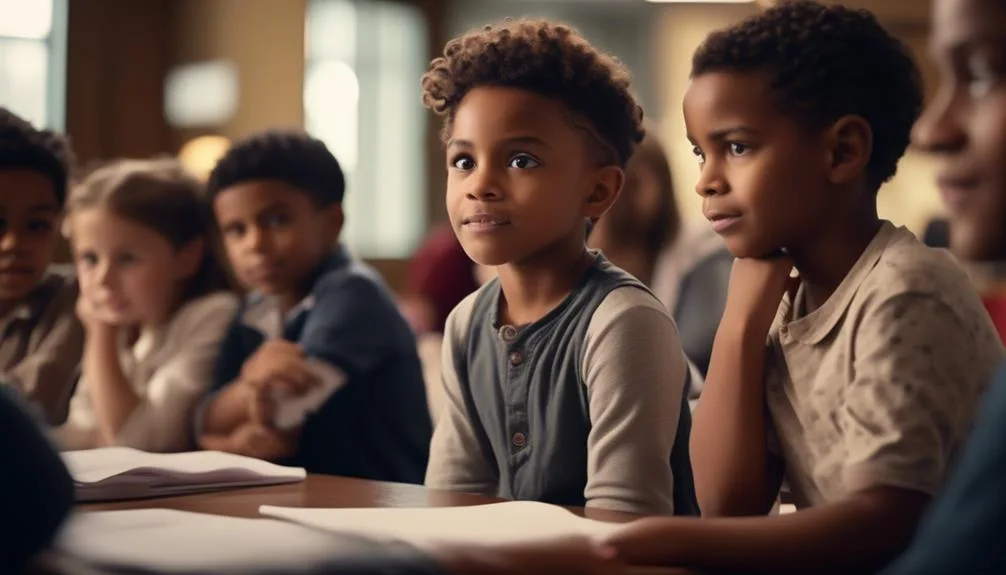Are you tired of feeling like a small fish swimming against a current of indifference or dominance? Ready to break free from the chains of passivity or aggression and unlock the power of assertive communication?
Well, get ready to discover a transformative approach that will revolutionize the way you interact with others. In this discussion, we will explore the profound impact of assertive communication, revealing its secrets to success and equipping you with the tools to navigate any social or professional setting with confidence and respect.
So, buckle up and prepare to embark on a journey of self-empowerment and effective communication that will leave you eager for more.
Key Takeaways
- Assertive communication is defined as the ability to speak and interact while respecting the rights and opinions of others.
- It involves standing up for one's rights, needs, and personal boundaries.
- Assertive communication aims to achieve goals without harming relationships, unlike aggressive communication.
- Teaching assertive communication skills can have positive outcomes in various aspects of life, including relationships, work, and personal well-being.
Definition and Characteristics
Assertive communication is a powerful tool that allows you to express your needs and opinions while respecting the rights and opinions of others. It's an essential skill for skills development and effective communication.
Assertive communication involves standing up for your rights, needs, and personal boundaries. It's characterized by direct eye contact, an assertive stance or posture, a strong tone of voice, and neutral facial expressions. Timing is also crucial in choosing the right moment to communicate assertively.
By practicing assertive communication, you can reduce interpersonal conflicts, maintain respect for others, express your needs and opinions honestly, increase your self-confidence and self-esteem, and improve your overall communication and relationships.
Assertive communication is a valuable skill that promotes understanding and fosters positive interactions with others.
Real-Life Examples

When it comes to assertive communication, there are various real-life examples where this skill can be applied effectively. Some of these examples include:
- Dealing with confrontational coworkers:
- Assertively expressing your concerns or disagreements during team meetings.
- Setting boundaries with coworkers who constantly interrupt or undermine your work.
- Communicating your needs in a respectful but firm manner when facing workplace conflicts.
- Setting boundaries with friends and family:
- Clearly articulating your preferences and limitations in social situations.
- Speaking up when someone crosses a line or violates your personal boundaries.
- Expressing your emotions and needs without being passive-aggressive or aggressive.
Benefits

By practicing assertive communication, you can experience a range of significant benefits in your personal and professional relationships.
One of the key benefits is increased self-confidence. When you communicate assertively, you express your needs and opinions with conviction, which helps you feel more empowered and confident in yourself.
Additionally, assertive communication promotes effective conflict resolution. By expressing your thoughts and feelings in a respectful manner, you can address conflicts openly and find mutually satisfactory solutions. This reduces the likelihood of misunderstandings and allows for better understanding and compromise.
Assertive Vs. Aggressive Communication

Understanding the distinction between assertive and aggressive communication is crucial for effective interpersonal interactions.
When it comes to assertive communication in relationships, assertiveness aims to achieve goals without harming relationships. It's respectful and considers the rights of others. On the other hand, aggressive communication involves intimidation and disregard for others' rights. It often leads to conflict and damaged relationships.
In daily life, the impact of assertive communication is significant. Assertive communication allows for open and honest communication between partners, addressing conflicts, and expressing needs. It promotes mutual respect and understanding, leading to more satisfying and fulfilling relationships.
On the contrary, aggressive communication can create tension, resentment, and a breakdown in communication.
Strategies and Role-Play

To develop assertive communication skills, it is helpful to utilize strategies such as role-playing. Role-playing allows you to act out different scenarios and practice expressing yourself assertively. This technique can be done alone, with a counselor, or with trusted individuals and helps build confidence in assertive communication. Studies have shown the effectiveness of role-playing in improving assertiveness skills.
Here is a table to give you a better understanding of role play techniques and solo practice methods:
| Role Play Techniques | Solo Practice Methods |
|---|---|
| Act out scenarios with a partner | Practice assertive responses in front of a mirror |
| Take turns playing different roles | Record yourself practicing assertive communication |
| Focus on body language and tone of voice | Write assertive scripts and rehearse them |
| Receive feedback and make adjustments | Visualize assertive interactions in your mind |
| Reflect on the experience and learn from it | Challenge yourself to assertively express your needs in everyday situations |
Teaching Kids and Workplace Applications

Teaching kids assertive communication skills is crucial for their social and emotional development. It equips them with the tools they need to navigate various interpersonal situations and build healthy relationships.
Here are three reasons why teaching kids assertive communication is important:
- Empowers them: Teaching kids assertive communication empowers them to express their needs, opinions, and boundaries effectively. It helps them develop self-confidence and assert their rights without being aggressive or passive.
- Enhances workplace dynamics: Assertive communication skills aren't only beneficial for personal relationships but also in the workplace. By teaching kids assertive communication early on, they're better prepared to handle conflicts, negotiate, and collaborate effectively with colleagues, leading to a more positive and productive work environment.
- Promotes emotional intelligence: Assertive communication encourages children to recognize and manage their emotions while considering the feelings of others. This emotional intelligence plays a crucial role in developing empathy, understanding, and navigating complex social dynamics both in and outside the workplace.
Frequently Asked Questions
What Are Some Common Barriers to Assertive Communication?
Fear and lack of confidence are common barriers to assertive communication. Additionally, cultural considerations such as language barriers and differing communication styles can hinder assertiveness. Overcoming these barriers is crucial for effective and respectful communication.
How Can Assertive Communication Be Helpful in Resolving Conflicts?
Assertive communication can help resolve conflicts by promoting open and honest dialogue, allowing for the expression of needs and opinions. It fosters mutual respect and understanding, strengthening personal relationships. In the workplace, strategies like training and creating a supportive environment can enhance assertive communication skills.
Are There Any Cultural Considerations to Keep in Mind When Practicing Assertive Communication?
When practicing assertive communication, it's important to consider cultural sensitivity and cross-cultural communication. Being aware of cultural differences helps you adapt your approach, respect others' perspectives, and build stronger relationships.
Can Assertive Communication Be Learned and Developed Over Time?
Yes, assertive communication can be learned and developed over time. Through effective communication and assertiveness training, you can enhance your skills and confidently express your needs and opinions while respecting others.
What Are Some Potential Challenges Individuals May Face When Trying to Communicate Assertively?
When trying to communicate assertively, you may face challenges such as overcoming fear of confrontation and dealing with resistance from others. However, with practice and confidence, you can navigate these obstacles and unlock the power of assertive communication.
Conclusion
In conclusion, by mastering the power of assertive communication, you can transform your relationships and improve your overall communication skills.
While some may argue that assertiveness can come across as aggressive, it's important to remember that assertive communication allows you to express your needs and boundaries respectfully while considering the rights and opinions of others.
By developing assertiveness skills, you can reduce conflicts, maintain respect, and unlock the key to effective and empowering communication.

